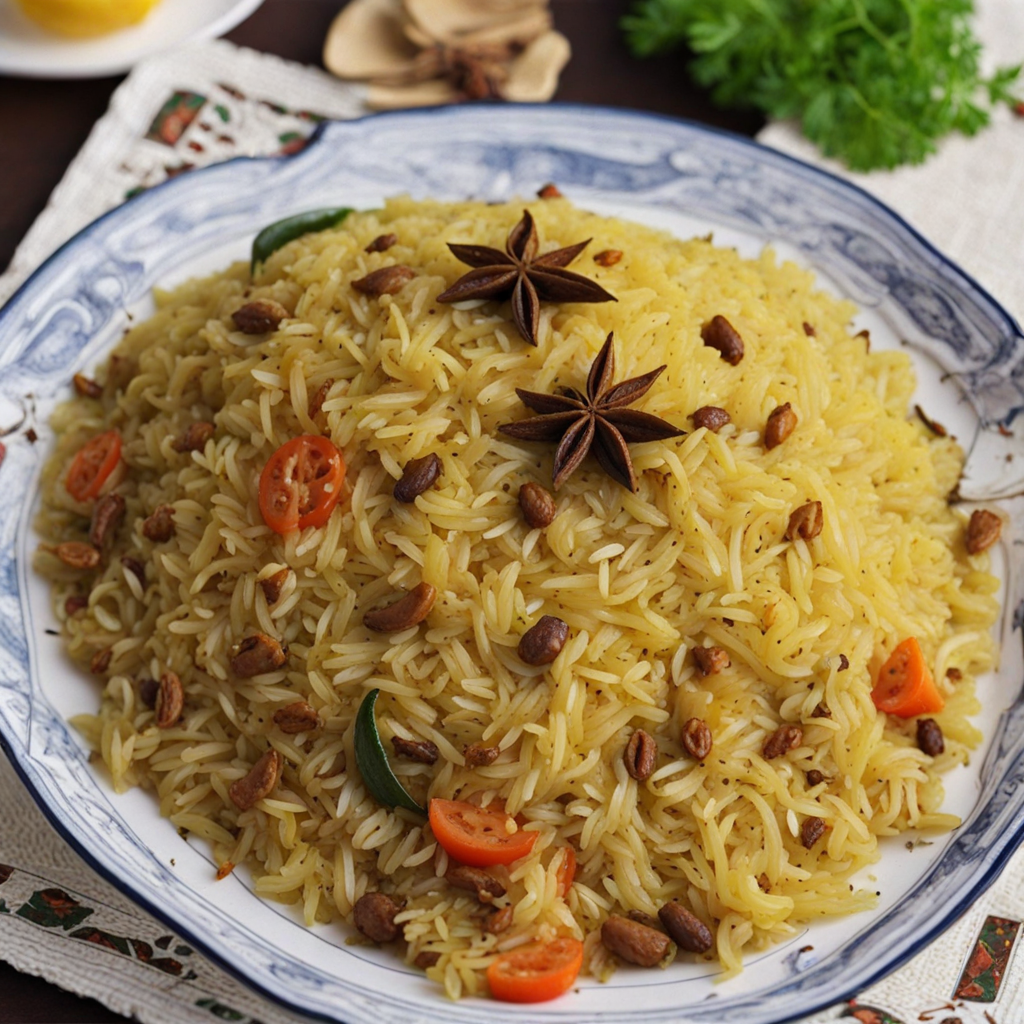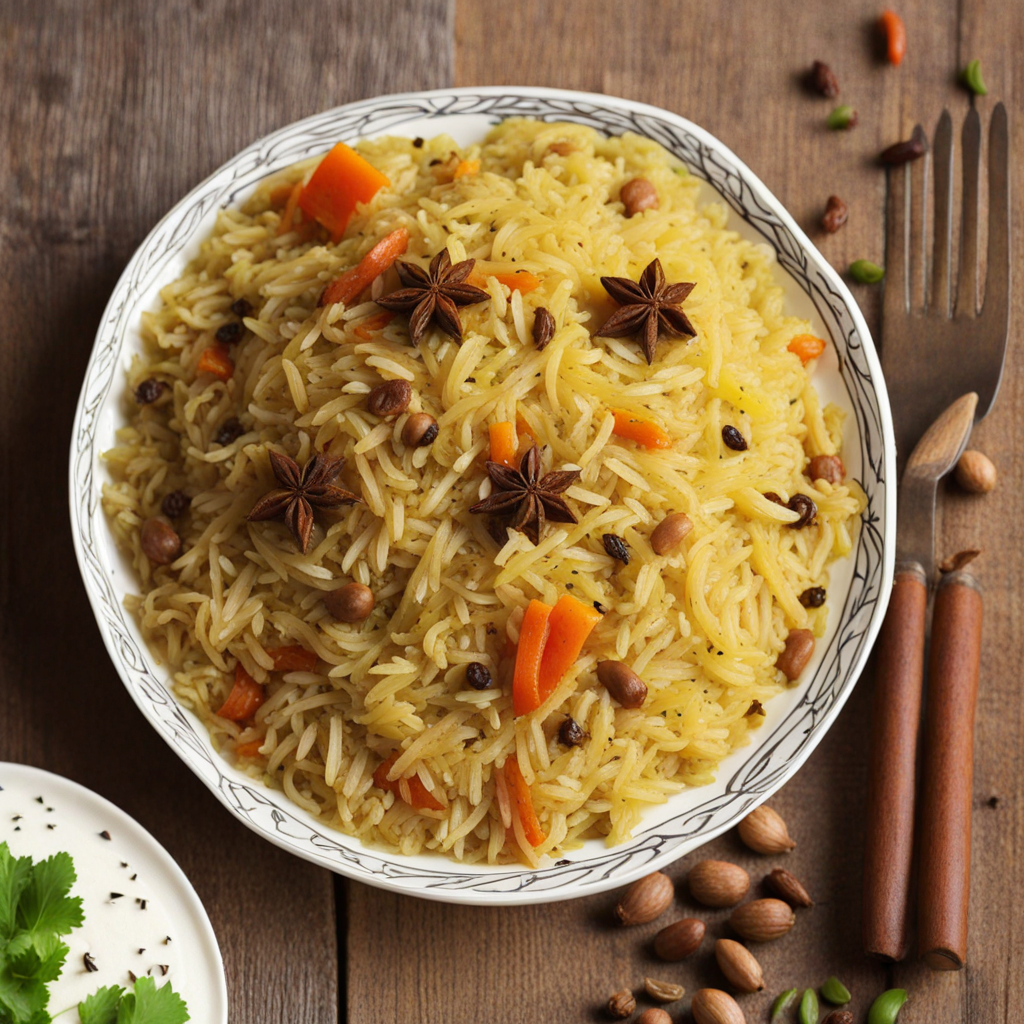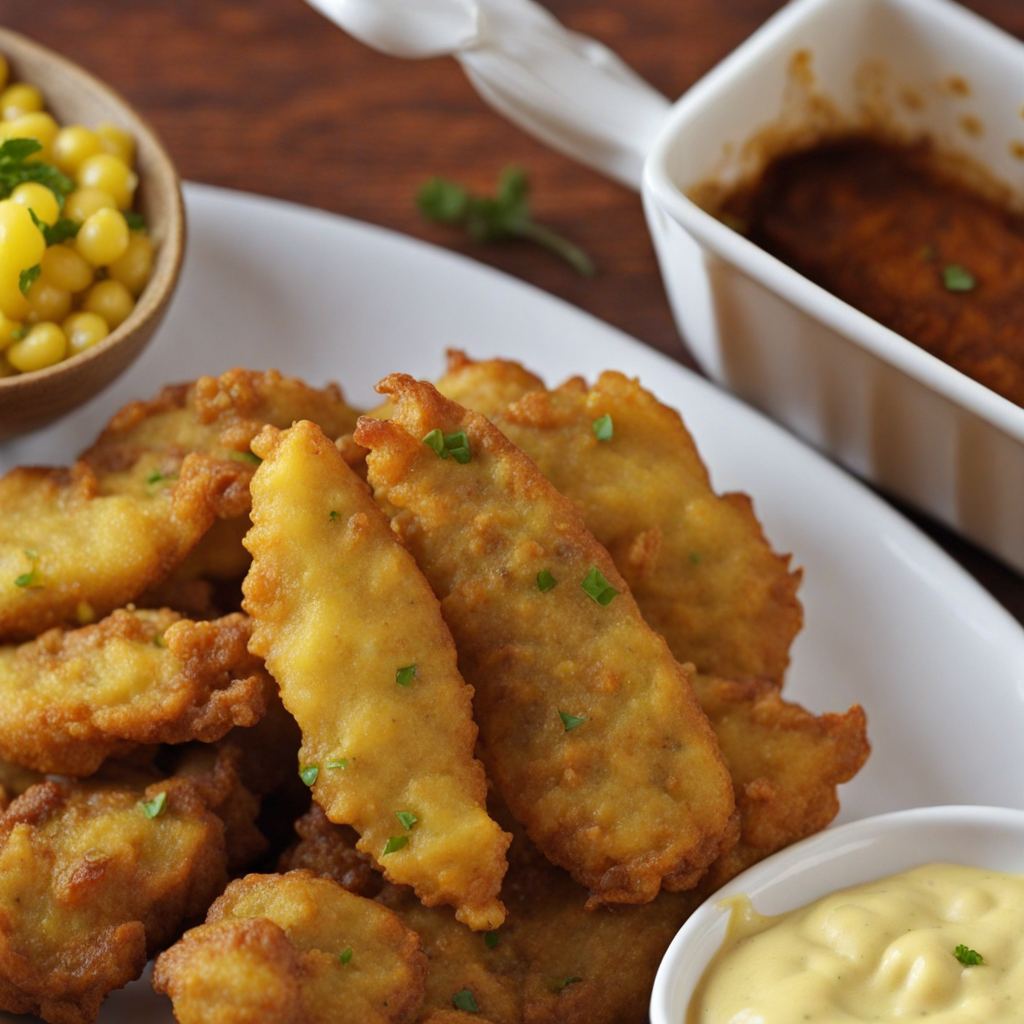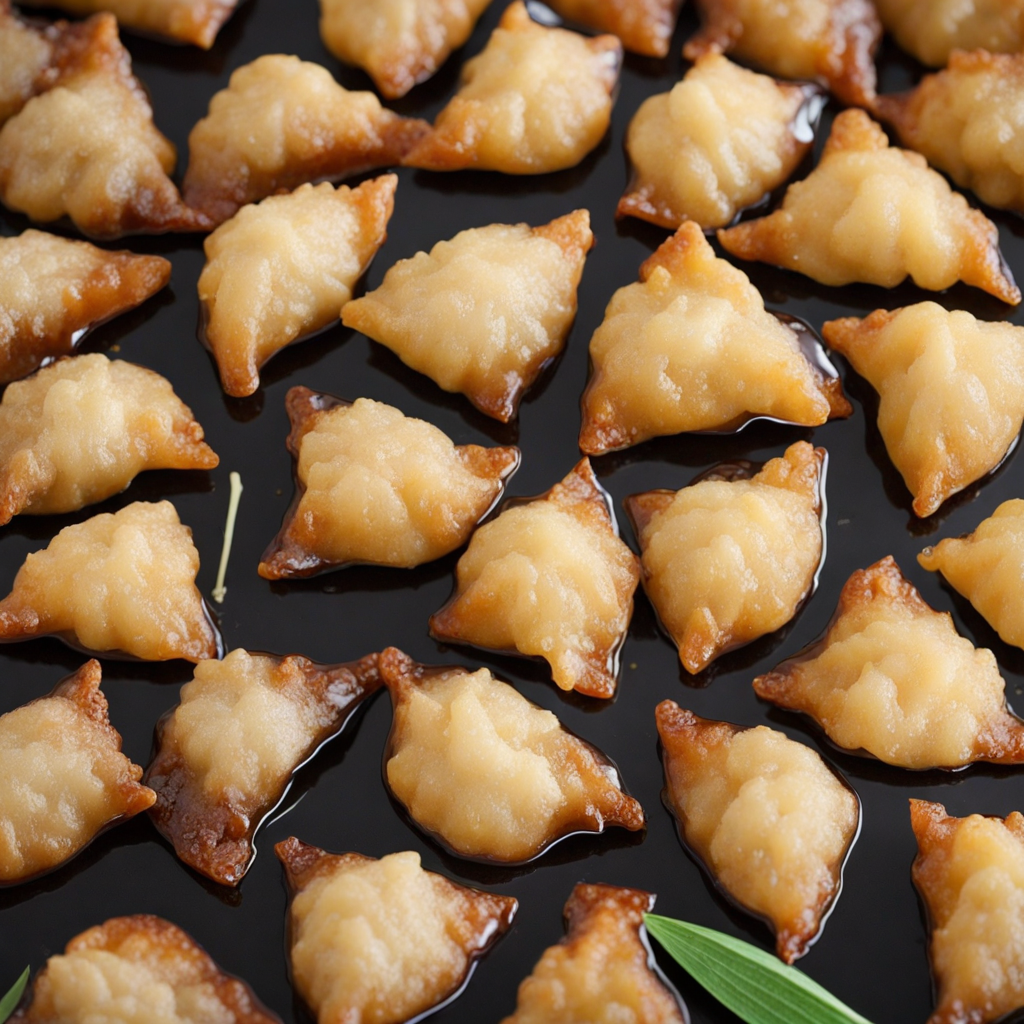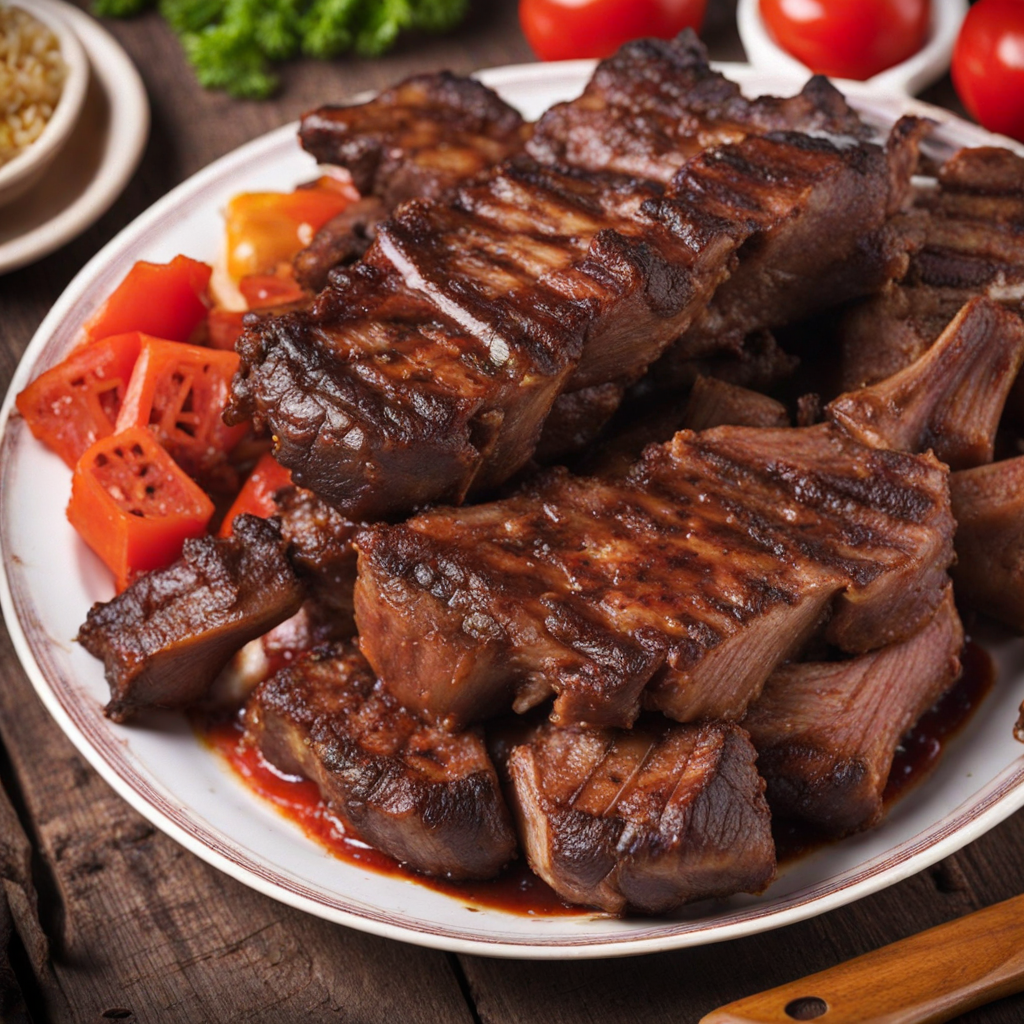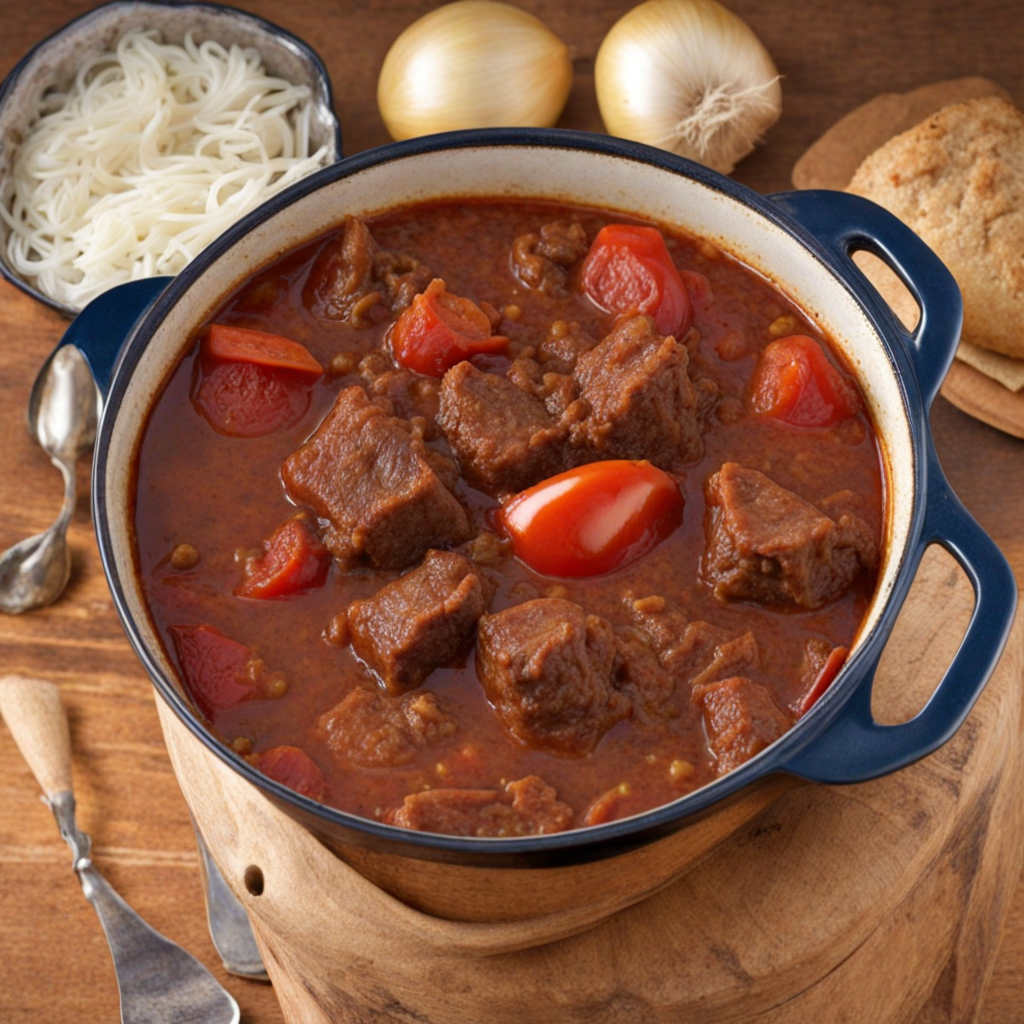Pilau
Kenyan Pilau is a fragrant and flavorful rice dish that embodies the rich culinary heritage of the coastal regions of Kenya, particularly among the Swahili community. It is a one-pot dish made with basmati rice, which is cooked to fluffy perfection, and a blend of aromatic spices that can include cumin, cardamom, cloves, and cinnamon. The spices are sautéed in oil or ghee, releasing their essential oils and creating a warm, inviting aroma that fills the kitchen. The addition of meat—commonly chicken, beef, or goat—adds a savory depth to the dish, while vegetables and sometimes nuts contribute texture and freshness. The preparation of Pilau often begins with marinating the meat in a mixture of spices and sometimes yogurt, which tenderizes the meat and infuses it with flavor. After browning the meat, it is combined with the sautéed spices and rice, along with a sufficient amount of broth or water to cook the rice. The dish is then simmered until the rice absorbs all the flavors and achieves a tender, fluffy texture. Traditionally, Pilau is served with a side of kachumbari, a fresh tomato and onion salad that adds a refreshing contrast to the rich and spiced rice. The beauty of Pilau lies in its versatility; each cook may have their own version, influenced by personal tastes or regional variations. Some recipes may incorporate coconut milk for a creamier texture, while others might include peas or carrots for a pop of color and added nutrition. This dish not only showcases the vibrant spices of East African cuisine but also serves as a communal meal, often enjoyed during celebrations and gatherings, making it a perfect choice for those looking to explore the depth and warmth of Kenyan flavors.
How It Became This Dish
Origin of Pilau Pilau, a fragrant rice dish that has become a staple in Kenyan cuisine, has its roots in the culinary traditions of the Indian subcontinent, particularly through historical trade routes. The dish is believed to have originated from Persian influences, where the term “pilaf” denotes a rice dish cooked in a seasoned broth. Pilau made its way to East Africa through Arab traders and later Indian immigrants, who brought with them their rich culinary traditions. The dish's evolution in Kenya is a beautiful confluence of various cultural influences, including Swahili, Indian, and Arab cuisines, which have melded together over centuries. Cultural Significance In Kenya, pilau holds a special place in both everyday life and ceremonial occasions. It is often served during significant events such as weddings, religious celebrations, and communal gatherings. The preparation of pilau is steeped in tradition, with recipes often passed down through generations. Each community may have its variations, adjusting spices and ingredients based on local availability and personal preferences. The communal nature of pilau preparation—where family and friends gather to cook—fosters a sense of togetherness and community, making it not just a dish but a cultural experience. Ingredients and Preparation The key ingredients of pilau typically include rice, meat (such as chicken, beef, or goat), and an array of spices, including cumin, cardamom, cloves, and cinnamon. The rice is usually sautéed in oil or ghee along with the spices before adding the meat and water, allowing the flavors to meld beautifully during the cooking process. The dish is often garnished with fried onions and served with accompaniments such as kachumbari (a fresh tomato and onion salad) or yogurt. The cooking method can vary; some prefer a drier texture, while others enjoy a more saucy version. Regional Variations Different regions of Kenya have their unique takes on pilau, reflecting local tastes and customs. For example, in coastal areas such as Mombasa, pilau is often enriched with coconut milk, which adds a creamy texture and enhances the dish's tropical flavors. The Swahili pilau is known for its vibrant colors and aromatic spices, reflecting the rich cultural tapestry of the region. In contrast, inland variations might lean toward simpler flavors, emphasizing the use of local ingredients like maize or millet alongside rice. Historical Evolution Throughout the 19th and 20th centuries, as Kenya underwent significant social and economic changes, so did its culinary landscape. The influx of Indian laborers during the construction of the Uganda Railway in the late 19th century introduced a new dimension to the food culture, leading to the widespread popularity of pilau. Over time, this dish became a symbol of multicultural identity, blending African, Indian, and Arab influences. The colonial period also played a role in shaping the dish's prominence in Kenyan society. As urban centers developed, pilau emerged as a popular dish among both the local population and colonial settlers. It became a common feature at social events, showcasing the melding of diverse culinary traditions. The dish's adaptability allowed it to thrive in different settings, be it in a humble home or at lavish banquets. Modern-Day Pilau In contemporary Kenya, pilau continues to be a beloved dish enjoyed by many. Its presence is felt in both urban and rural settings, with street vendors, restaurants, and homes serving variations that cater to diverse palates. The rise of social media and food blogging has contributed to the resurgence of interest in traditional dishes like pilau, inspiring a new generation to explore and experiment with its recipes. Moreover, pilau's appeal has transcended national borders, with Kenyans in the diaspora seeking to recreate the flavors of home. It is often at the center of cultural celebrations and gatherings, serving as a reminder of heritage and identity. The dish's ability to adapt to modern dietary preferences—such as vegetarian or vegan versions—ensures its relevance in a rapidly changing culinary world. Health and Nutrition While pilau is primarily celebrated for its rich flavors and cultural significance, it also possesses nutritional benefits. The inclusion of meat provides essential proteins, while the spices used offer various health benefits, from aiding digestion to possessing anti-inflammatory properties. When prepared with vegetables or legumes, pilau can be a well-rounded meal, contributing to a balanced diet. However, like many dishes, moderation is key, as pilau is often enjoyed during celebrations or special occasions, leading to larger portions and richer ingredients. Conclusion Pilau is more than just a dish; it is a representation of Kenya's cultural diversity and culinary history. Its journey from Persian rice dishes to a beloved Kenyan staple is a testament to the country's rich tapestry of influences. As it continues to evolve and adapt, pilau remains a dish that unites people, fosters community, and celebrates heritage. Whether enjoyed in a bustling city or a quiet village, pilau continues to be a cherished part of the Kenyan culinary landscape, carrying with it the flavors and stories of generations past.
You may like
Discover local flavors from Kenya


